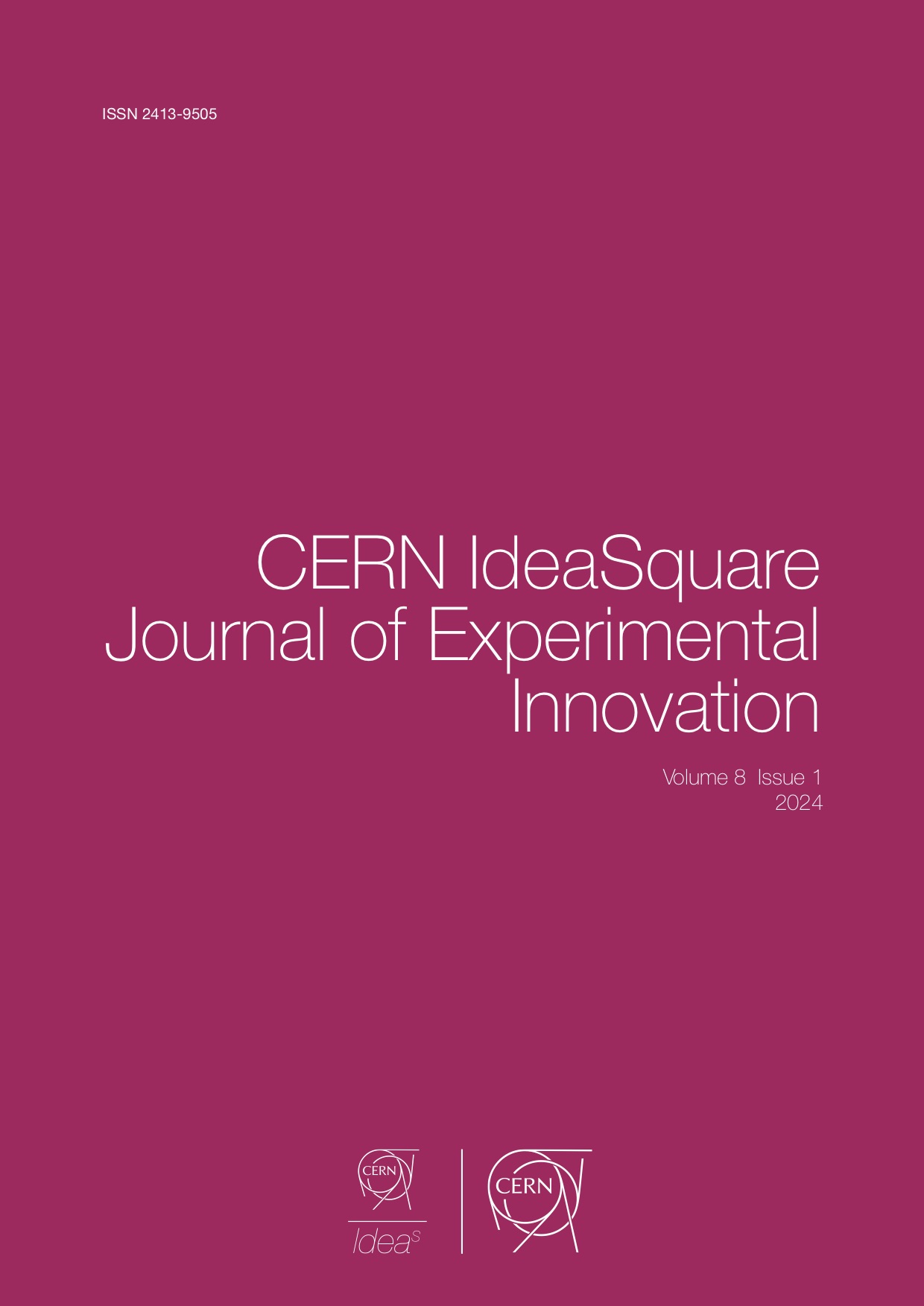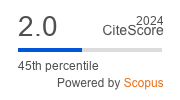Mind the Gap: Addressing Unconscious Bias in Multidisciplinary Team Ideation
DOI:
https://doi.org/10.23726/cij.2024.1406Keywords:
bias, ideation, multidisciplinary teamAbstract
While corporate innovation serves as a pivotal competitive advantage for firms, the subtle influence of cognitive biases on the creative process cannot be underestimated. This study aims to explore the extent to which unconscious bias limits ideation within multidisciplinary teams. Ethnographic research and survey findings reveal that unconscious bias does influence ideation by curbing creativity, constraining the exploration of novel concepts, and nurturing criticism of ideas that differ from one’s own perspective. Despite the unavoidable presence of unconscious bias, multidisciplinary teams can take proactive measures to recognise, acknowledge, and address it through open communication and managerial coaching.
References
Akin, T., 2022, Socratic Dialog Method: How Philosophy can help your Teams and your Organization. Management 3.0. https://management30.com/blog/socratic-dialog- method/
Alshwayat, D., Elrehail, H., Shehadeh, E., Alsalhi, N., Shamout, M.D. and Rehman, S.U., 2023, An exploratory examination of the barriers to innovation and change as perceived by senior management. International Journal of Innovation Studies, 7 (2), pp.159-170.
ATTRACT, 2020. Attract-eu. https://attract-eu.com/
Biderman, N., Bakkour, A. and Shohamy, D., 2020, What are memories for? The hippocampus bridges past experience with future decisions. Trends in Cognitive Sciences, 24 (7), pp.542-556.
Blackwell, A. F., Wilson, L., Boulton, C., & Knell, J., 2009, Radical innovation: crossing knowledge boundaries with interdisciplinary teams (No. UCAM-CL-TR-760). University of Cambridge, Computer Laboratory, pp. 10- 50.
Caprioli, S., Fuchs, C., & Van den Bergh, B., 2023, On Breaking Functional Fixedness: How the Aha! Moment Enhances Perceived Product Creativity and Product Appeal. Journal of Consumer Research, 50 (1), pp. 48-69.
CERN IdeaSquare., 2022. CERN IdeaSquare Summer School. IdeaSquare. https://ideasquare.cern/
Edwards, J. S., & Rodriguez, E., 2019, Remedies against bias in analytics systems. Journal of Business Analytics, 2 (1), pp. 74-87.
Eidelman, S., & Crandall, C. S., 2012. Bias in favour of the status quo. Social and Personality Psychology Compass, 6 (3), pp. 270-281.
Fiarman, S. E., 2016, Unconscious bias: When good intentions aren’t enough. Educational leadership, 74 (3), pp. 10-15.
FitzGerald, J., & Mills, J., 2022, The Importance of Ethnographic Observation in Grounded Theory Research. Forum Qualitative Sozialforschung/Forum: Qualitative Social Research, 23 (2).
Geng, S., 2016, Decision time, consideration time, and status quo bias. Economic Inquiry, 54 (1), pp. 433-449.
Heilman, M. E., 2012, Gender stereotypes and workplace bias. Research in Organizational Behavior, 32, pp. 113- 135.
Hirica, A., 2021, Unlocking Unconscious Biases into Impactful Design Work. Design Management Review, 32 (3), pp. 24-27.
Johnson, C. K., Gutzwiller, R. S., Gervais, J., & Ferguson- Walter, K. J., 2021, Decision-making biases and cyber attackers. Institute of Electrical and Electronics Engineers, pp. 140-144.
Lieder, F., Griffiths, T. L., M. Huys, Q. J., & Goodman, N. D., 2018, The anchoring bias reflects rational use of cognitive resources. Psychonomic Bulletin & Review, 25, pp. 322-349.
Mcleod, S., 2023, Likert Scale Questionnaire: Examples & Analysis. Simple Psychology. https://www.simplypsychology.org/likert-scale.html
Mehta, R., & Zhu, M., 2016, Creating when you have less: The impact of resource scarcity on product use creativity. Journal of Consumer Research, 42 (5), pp. 767-782.
Hallihan, G. M., & Shu, L. H., 2011, Creativity and long-term potentiation: Implications for design. American Society of Mechanical Engineers, 54860, pp. 491-502.
Kahneman, D., & Tversky, A., 1979, Prospect theory: An analysis of decisions under risk. Econometrica, 47, pp. 263-291.
Mumford, M. D., Blair, C., Dailey, L., Leritz, L. E., & Osburn, H. K., 2006, Errors in creative thought? Cognitive biases in a complex processing activity. The Journal of Creative Behavior, 40 (2), pp. 75-109.
Munoz-Rubke, F., Olson, D., Will, R., & James, K. H., 2018, Functional fixedness in tool use: Learning modality, limitations and individual differences. Acta Psychologica, 190, pp. 11-26.
Nguyen, N., 2021, The fearless Organization: creating psychological safety in the workplace for learning, innovation, and growth. The Learning Organization, 28 (3), pp. 321-323.
Oberai, H., & Anand, I. M., 2018, Unconscious bias: thinking without thinking. Human Resource Management International Digest, 26 (6), pp. 14-17.
Orstad, H., 2018, Unleashing Hidden Team Resources: Time and Talent. Creative Nursing, 24 (4), pp. 198-202.
Samuelson, W., & Zeckhauser, R., 1988, Status quo bias in decision making. Journal of Risk and Uncertainty, 1 (1), pp. 7-59.
Shenoy, V., & Kumar, M., 2021, Common biases found in the workplace: visible and invisible inequalities. Strategic HR Review, 20 (5), pp. 183-185.
Smith, F. L., Stone, T. H., Kisamore, J. L., & Jawahar, I. M., 2010, Decision-making biases and affective states: their potential impact on best practice innovations. Canadian Journal of Administrative Sciences/Revue Canadienne des Sciences de l'Administration, 27 (4), 277-291.
Sull, D., 1999, Why Good Companies Go Bad. Harvard Business Review. https://hbr.org/1999/07/why-good- companies-go-bad
Suveren, Y., 2022, Unconscious Bias: Definition and Significance. Psikiyatride Guncel Yaklasimlar, 14 (3), pp. 414-426.
University of Virginia., 2021, Ethnographic Research. Research Virginia. https://research.virginia.edu/irb- sbs/ethnographic-research
Williams, J. C., Korn, R. M., & Mihaylo, S., 2020, Beyond implicit bias: Litigating race and gender employment discrimination using data from the workplace experiences survey. Hastings LJ, 72, pp. 337.
Yechiam, E., 2019, Acceptable losses: The debatable origins of loss aversion. Psychological Research, 83 (7), pp. 1327-1339.
Yong, K., Sauer, S. J., & Mannix, E. A., 2014, Conflict and creativity in interdisciplinary teams. Small Group Research, 45 (3), pp. 266-289.
Downloads
Published
How to Cite
License
Copyright (c) 2024 Kamilla Dajani, Jozef Šaranko

This work is licensed under a Creative Commons Attribution 4.0 International License.
Authors who publish with this journal agree to the following terms:
- Authors retain copyright and grant the journal right of first publication with the work simultaneously licensed under a Creative Commons Attribution License that allows others to share the work with an acknowledgement of the work's authorship and initial publication in this journal.
- Authors are able to enter into separate, additional contractual arrangements for the non-exclusive distribution of the journal's published version of the work (e.g., post it to an institutional repository or publish it in a book), with an acknowledgement of its initial publication in this journal.
- Authors are permitted and encouraged to post their work online (e.g., in institutional repositories or on their website) prior to and during the submission process, as it can lead to productive exchanges, as well as earlier and greater citation of published work (See The Effect of Open Access).


